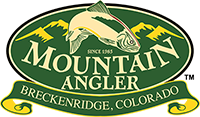Global Wetlands

Wetlands.org, considers wetlands to be the “unsung heroes” in the fight against climate change. They just penned a white paper supporting the idea wetlands can be pivotal in achieving global warming targets as well as increasing biodiversity.
“Wetlands store almost a third of global soil carbon, and support 40% of global biodiversity, despite covering just 6% of the earth’s surface. Sadly though, wetlands are disappearing three times faster than forests, with 35% of wetland ecosystems lost since 1970.” (Wetlands International)
We love our beautiful high elevation wetlands here in the Rockies. Globally, they come in many types. “Mangrove forests, for example, get less publicity than tropical forests, even though the destruction of mangrove ecosystems results in 10% of total CO2 emissions from deforestation globally.” (Wetland.org)
A mangrove is a shrub or tree that thrives in tropical or sub-tropical coastal regions enjoying the saline water environment. They are the only tree species according to Conservation.org that can survive in salt water. They don’t like freezing temperatures, which is why they are found mainly in south Florida.
Researchers estimate the monetary value of the benefits, or “ecosystem services,” provided by mangroves at $194,000 per hectare annually. Multiplied by their global extent, that means the world’s remaining mangroves provide around $2.7 trillion in services every year.” (2018 Mongabay.com)
Peatlands are another ecological wetland powerhouse. They occupy only about 3% of the global land area but contain about 25% of the global soil carbon stock. That’s twice the amount found in the world’s forests. These wetlands store older carbon in their peat layer for the long term, and in vegetation for the shorter term. (Pew Charitable Trust)
Ireland harvested peat to generate electricity. They have since phased that practice out and are rehabilitating degraded landscapes recognizing their enormous potential to fight global warming.
These natural wonders are considered blue carbon sinks. The Blue Carbon Initiative was created to protect mangroves, coastal marshes and other marine eco-systems. The reason is an estimated 83% of the global carbon cycle is circulated through the ocean.
These compelling eco-systems, vital to our planet’s health and sustainability, should be top of mind for all conservationists.
Tom Koehler















